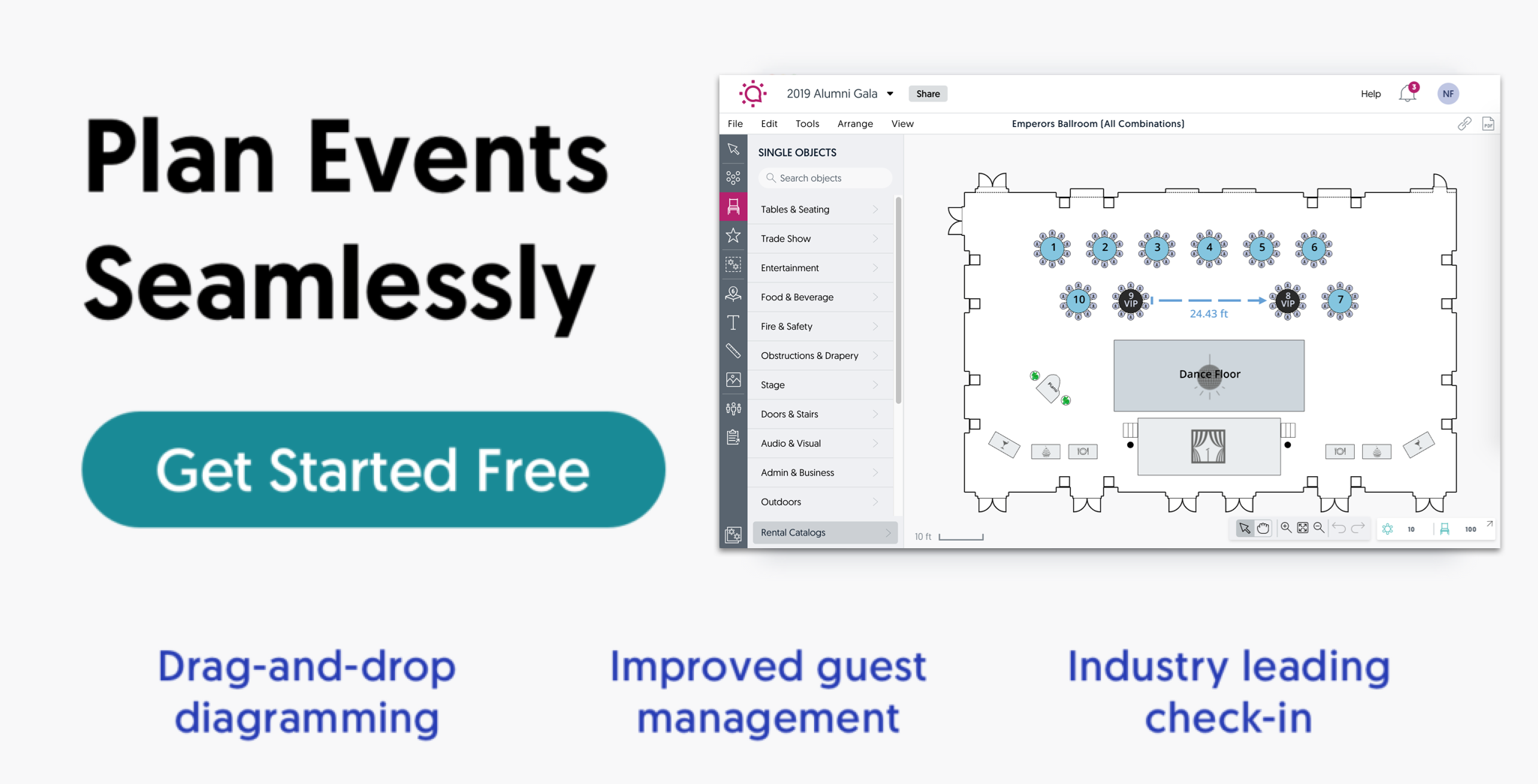
How to Plan an Outdoor Event in 10 Steps
Whether it’s an outdoor wedding, a corporate event, or even a family gathering, outdoor events are a great way to take advantage of nature and do something a little different. But while they tend to be a bit more casual than their indoor counterparts, planning for them is anything but. Want to learn how to plan an outdoor event that attendees will love? Keep reading!
Below, we cover all the essentials of how to plan an outdoor event. We include tips, tricks, expert advice, and some of the top event planning tools needed to make everything go off without a hitch.
Discover how to plan an outdoor event in a few simple steps:
1. Find a great outdoor event venue.
The venue is an important component of any outdoor event. It’s going to make a big difference for the logistics and the overall feel of the event. Are you headed to a venue that normally has events outdoors? If so, everything should run pretty smoothly. If you’re going to a more natural setting with less infrastructure in place, you’ll have more work ahead of you to get everything in order.
Take the chance to tour the venue and start looking for what the space might need. Note special features you’d like to highlight, such as a lake to serve as a backdrop or a tree to hang lights. Also note any quirks or challenges related to the venue. Is it windy? Is it in a low-lying area that gets very wet? Are there a lot of bugs? Make note of anything you notice on your tour so that you can come up with a plan for it.
2. Hire a caterer.
Talk through the logistics of catering an outdoor event with your vendor and make sure they have experience running events outdoors. Depending on the venue, they may need to bring their own source of heat (like propane grills), tents to keep out of the sun, and equipment to keep food cool and safe. Make a plan for which equipment will be provided by them and what others are responsible for.
If there won’t be any refrigerator access, choose simple foods that can be out for the duration of the event. The same thing goes for stoves and other heating sources: Preparing simple dishes ahead of time or opting for room-temperature dishes may be the best bet.
3. Get the right permits.
Depending on the location, outdoor events may require permits from the town or city authorities in order to lawfully operate. These could include zoning permits, food and beverage permits, and gathering permits for the appropriate number of participants. Research the permits needed for your locality and leave plenty of time to get them approved before the big day. Trust us: You don’t want to have to tell attendees to go home if your event gets shut down.
4. Know the rules.
Just like permits, the other rules governing outdoor events are super important. It may not be the most fun part of the process, but learning about noise ordinances, fire and safety codes, and local restrictions on outdoor events will determine what you can do and when you can do it. If you’re planning anything out-of-the-box like fireworks, having live animals, holding a light show or bonfire, or bringing in special equipment, you’ll want to speak to the local police department and city council to make sure everything will be allowed.
5. Ensure that attendees will be comfortable.
To make sure attendees have the best experience, there are a few extra boxes to check when it comes to outdoor events. For starters, get ready for both the day and night temperatures by having heaters and fans ready. Also, consider whether you need access to indoor space for guests to cool off or warm up in extreme temperatures or in the case of inclement weather (more on this later).
There’s also no getting around the bathroom issue. Calculate the number of bathrooms you need for your attendees (and add some extra to be safe). If you’re using portable toilets, come up with a plan for where to put them. You want them to be easily accessible but not in the middle of everything. If you have access to indoor bathrooms, make sure you have clear signage showing attendees where to go.
6. Source the right equipment.
Many outdoor events require a ton of equipment to run smoothly. As mentioned above, your caterers may need special equipment for heating, cooling, storing, and serving food. You’ll need places for guests to sit, along with everything for them to eat a meal. If your event includes dancing, presentations, or music, you’ll need audio/visual equipment. But with the added challenges of an outdoor environment, you may also need heaters, fans, a dance floor, electricity, lighting, tents, and more.
While this may seem overwhelming, don’t worry. You’re not alone in this process. If you choose great vendors who have experience with outdoor events, they can help guide you and explain what equipment you need for their piece of the puzzle. Keep a centralized list so that you can identify any overlap or gaps in equipment and give yourself the best chance of success.
7. Get the right tools and technology.
One of the most important steps in learning how to plan an outdoor event is familiarizing yourself with the tools and technology that will help make things run smoothly. Whether that’s a virtual tour of the space to get attendees excited for the event, an RSVP tool to keep the attendee list organized, or event diagramming solutions to map the whole thing out before it takes place, every event needs tools to maximize success.
Of course, every event is different, so don’t expect a one-size-fits-all solution. Do your research ” our post highlighting the best event management tools on the market is a great place to start ” and weigh the pros and cons of all the options that you think may be able to help.
8. Think about accessibility.
As always, consider attendees with disabilities as you put together your plan. You’ll need ramps and access points for those with mobility issues and clear lighting and signage for those with limited vision. Walk through the venue with accessibility in mind. Note any areas that may pose difficulties and figure out how you’ll help those with disabilities to navigate them.
9. Arrange for setup and breakdown.
Pretty much any outdoor venue you select will require that you leave the space in the same condition you found it in. This means that you’ll need to plan the setup (who’s going to take care of what?) and the breakdown and cleaning process ahead of time. For some venues, you may even need to take away all trash, so make sure you ask in advance about what’s required.
10. Have a backup plan.
Outdoor events are a lot of fun, but there are a few more things that can go wrong when compared to indoor events. The biggest of these is the weather. Make a plan for what you’ll do if it rains, snows, or is very hot or cold, so that you know how things will change and what special planning needs to be done. You may be able to arrange with your vendors for equipment that will only be used in the case of inclement weather, such as umbrellas, tents, or furniture covers.
You should also take the time to think about any other issues that may come up on the big day so that you can come up with a backup plan for those as well. Once you have a good idea of everything that could go wrong, you’ll be in a much better position for everything to go smoothly and to have a great event!
Now you know how to plan an outdoor event!
Ready to get started on your planning? Here are 27 creative ideas for your outdoor event. Want to take a deeper dive into the event planning process as a whole? Our guide on how to plan an event has everything you need.


